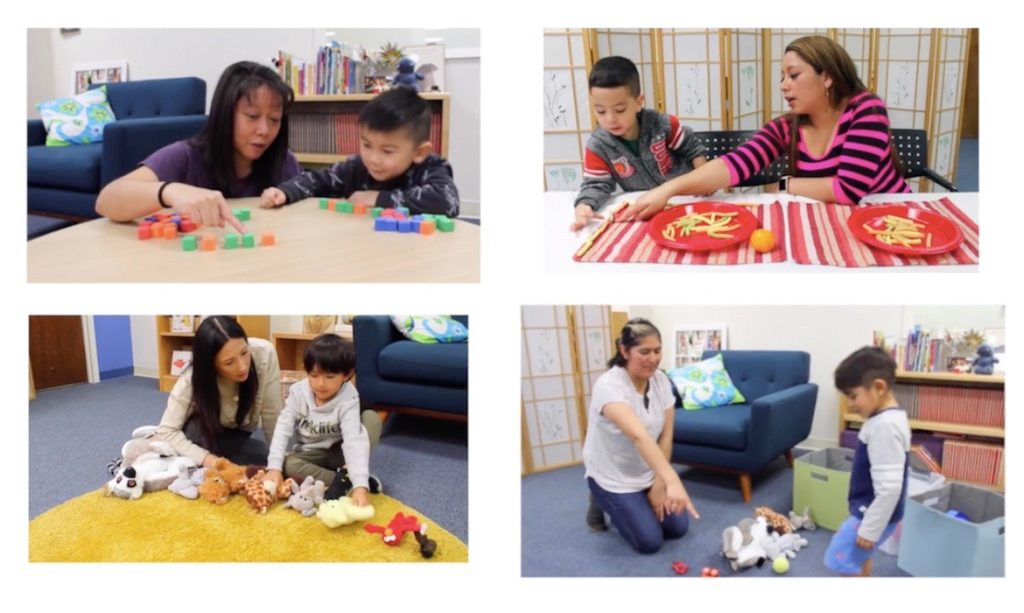- Many family routines, from setting the table to reading books, offer opportunities to learn early math.
- Family math is parents, caregivers, and young children exploring math together.
- Videos that showcase families engaging in early math learning can be useful to anyone interested in supporting family math.
“Bravo!” Albertina declares, cheering on her young son, Angel, who has correctly picked the sock that comes next in a pattern they are creating with laundry. They sit side-by-side, grabbing black and white socks from a basket and working together. Albertina then asks her son which color sock should come next and Angel picks up a sock to continue the pattern.
This family transformed an ordinary household chore into a game that supports Angel’s early math learning. This activity is one of many ways to support the development of early math skills during everyday family routines. Whether doing chores, playing at home or the park, shopping at the supermarket, reading books together, or waiting at the bus stop, parents and caregivers can bring math into daily conversations and playtime with their children.
Math is everywhere in daily life, no matter one’s socioeconomic background, culture of origin, or language. The many ways in which caregivers find opportunities to explore everyday math with children at home and in their communities is called family math. Research shows that family math supports the development of key early math skills, which are critical for success in school and life.
Learning from Other Families
To inspire and support families with young children to engage in early math learning together, the education nonprofit Tandem, Partners in Early Learning, in collaboration with DREME, produced video resources that promote family math. The videos are short and free to watch and share. Suitable for viewing at home and in community workshops, family playgroups, and parent-practitioner meetings, the videos are designed for families and professionals who work closely with families.
Each video offers early math learning tips and powerful examples and insights from real families who discuss creative ways to explore and learn about math.
“Math can happen anywhere, you know, if you try to find the opportunity,” shares Cecilia, a parent featured in the Everyday Family Math video.
In this video, families engage in a variety of fun and simple, yet meaningful, everyday math activities. Using items commonly found in many homes, caregivers talk, ask questions, and play together to build their children’s critical thinking skills.

For example, a mother and her young son line up a group of stuffed animals in order according to their size. In another scene, a parent uses words that support learning about space and place while reading aloud from a picture book (“little bear is next to the book, big bear is to the left of the book”).
The parents in this video show just how easy it is to incorporate math into everyday family activities. As Antonio, the father of a young son, says, “There’s numbers around us … in this whole world, so we just try to incorporate what’s already there into his learning.”
In addition to giving caregivers ideas about how to start or deepen their engagement with family math, professionals who work with families can also use this resource as a springboard to brainstorm with families additional ways to bring math into their everyday life.
Watch and Share
As we share these resources, we are deeply grateful to the stars of the video: the families! We also recognize the production and leadership teams at Tandem, Partners in Early Learning, who filmed, interviewed, and continue to partner with these families and communities. Finally, we are grateful to The Evelyn and Walter Haas, Jr. Fund for their generous financial support for developing these videos.
Please enjoy and share the Everyday Family Math video, and stay tuned for more family math videos!



